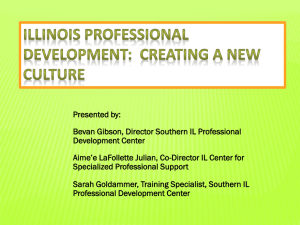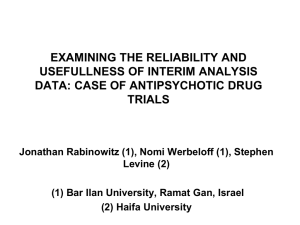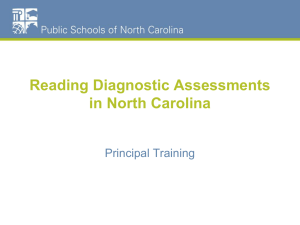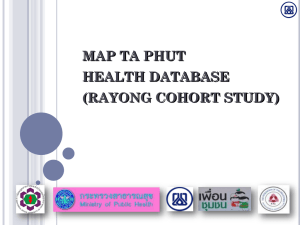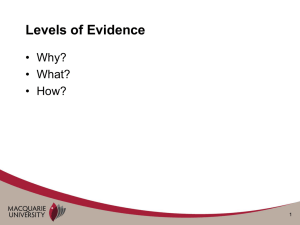Senior Needs and Gaps Analysis Presentation May 2013
advertisement
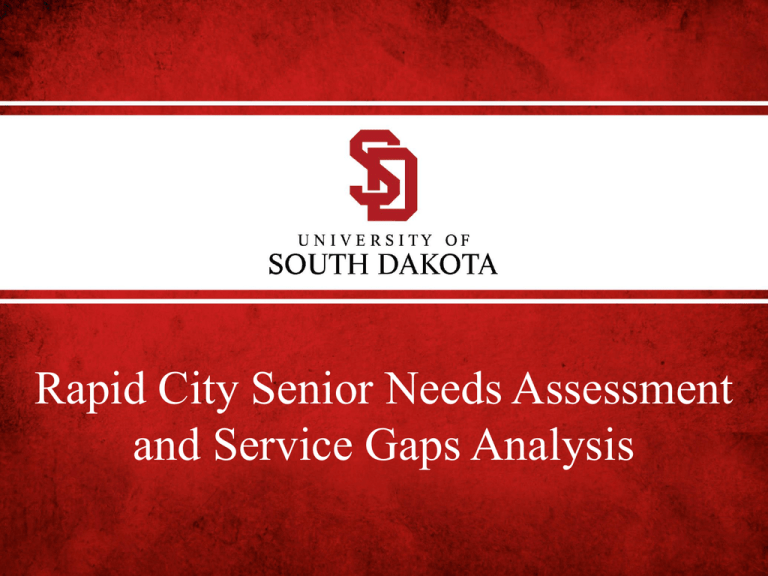
Rapid City Senior Needs Assessment and Service Gaps Analysis Initial Research Questions 1. What are the most pressing needs of the current senior community of Rapid City? 2. How will the needs of residents age 50+ shift over the next 20 years? 3. What services, activities, or facilities will make Rapid City a destination to live for 50+ adults and retirees? Research methods included the following tasks: 1. Senior community telephone survey. 2. Senior community stakeholders focus groups. 3. Telephone interviews with community members with particular insights into senior care needs and existing resources. 4. Senior community resource inventory. 5. Gaps analysis. 6. Service category ratings. More about the research Seventeen community standards were assessed as part of this analysis Each were ranked at “below,” “at” or “above” the expressed needs of the community. Determinations were based on data collected through all research methods (e.g., survey, focus groups, cultural inventory, etc.) Summary Findings Through the analysis of survey, focus group, elite interview and gaps analysis data we were able to determine that: • 3 of 17 areas were ranked “above” the present community need. • 5 of 17 areas were ranked “at” the present community need. • 9 of 17 areas fell “below” expressed community need. Above At Below 1. Civic and social engagement. 2. Volunteer opportunities. 3. Community development. 1. 2. 3. 4. 1. Access to health care (including specialists). 2. Mental health. 3. Fitness opportunities. 4. Independent living. 5. Assisted living and skilled care. 6. Access to services. 7. Shopping. 8. Housing. 9. Transportation, mobility, and ADA-accessibility. Community safety. Sense of community. Employment. Recreational opportunities. 5. Religious and spiritual opportunities. The interest in resources needed in the community varied according to age , race and socioeconomic status. Interesting observations were made in terms of the different interests that four age groups hold for the seventeen service categories studied here. The four age groups are as follows: 1. Community members under 50 years old. 2. Community members between 50 and 64 years old. 3. Community members between 65 and 80 years old. 4. Community members older than 80 years. Resource Total Positive Cohort Interest One (all cohorts) Cohort Two Cohort Three Cohort Four Central Facility for Senior Resources 63.8 65 75 57.3 55.8 Recreation and Fitness Center 53.4 65 64.8 46.9 43.9 Light Housekeeping and Maintenance 45.8 80 51.1 35.6 53.8 Home Repair Program 45.7 70 56.4 41.1 28.4 Senior Center 44.2 52.6 49.4 43.6 32.5 Door to Door Transportation 41.6 70 50.8 33.6 35.8 Telephone Helpline 37.8 57.9 47.5 33.8 21.8 Senior Lunch Program 35.4 60 41.1 28.1 37 Personal Care at Home 30.2 40 39.2 25 22.2 Nutrition Education 23.6 45 24.7 22.1 19.8 Mental Health Counceling 23.2 35 32.6 14.9 22.2 Financial Planning 22.9 45 30.4 16.4 18.5 Adult Day Care 19.2 38.9 24 14.6 16.9 Respondents likely to use a single community center by age cohort 80.0% 70.0% 60.0% 50.0% 40.0% 30.0% 20.0% 10.0% 0.0% Cohort 1 Cohort 2 Unlikely Cohort 3 Unsure Likely Cohort 4 New Senior Center as a broad-based solution Survey respondents were asked to state their ideas on what Rapid City can do to better serve senior interests in the next 5-10 years and in the next 10-20 years. Needs were articulated in the areas of improved access to • General health care • Housing • Specialized health care (e.g., Alzheimer and cancer centers) • Recreation and fitness • Affordable retail • • • • Transportation infrastructure Social and emotional support programs Information sharing Senior employment On whole, it seems that several interests articulated by respondents could be satisfied by investments in a comprehensive and geographically central senior community resource center. Ideally, this new facility would include coordinated activities and fitness geared toward engaging seniors in healthy living practices, a city-wide information resource that indexed programs ranging from health care to companionship, and that would expand upon the current level of residential programs for people transitioning toward assisted living and skilled nursing contexts Input from Focus Groups Community Strengths Small Town Feel Climate and the Black Hills Progressive Development Patterns Quality Health Care Parks, Bike Trails, Recreation and Activities Senior Centers Safety Focus Groups (cont.) Community Challenges Transportation Resources Nursing Homes, Assisted Living, Respite Care for Ill Seniors, and End of Life Care Single-floor affordable housing Healthcare Targeted to Seniors In-Home Services Low Income Housing Living Wage Wellness Resources Focus Groups (cont.) Recommendations Make a Plan – By far the most prevalent recommendation among focus groups is that the community leaders need to be intentional about building a plan and then working to implement that plan through zoning, community planning, partnering with developers, motivating community boosters, and engaging in strong leadership designed specifically to build community resources that entice people 50+ to stay and to come to the city. Increase the Depth and Quality of Senior Transportation – There was strong empathy by focus group members that often ridership is low, causing leaders to not move toward more complex and higher quality ridership. Participant’s challenged the community to be creative in assuring transportation resources are available for people. Downtown Development – Dovetailing on other recommendations to make the city more enticing to 50+ people, creating more housing downtown that includes parking and other amenities could act to recruit 50+ individuals. Focus Groups (cont.) Recommendations (cont.) Neighborhood Shopping – Focus groups were clear that we 1) do not have enough variety of shopping and virtually none that caters to 50+ buyers, 2) that shopping is moving to the fringes of town making it less accessible, and 3) that neighborhood development, especially on the west side, that includes shopping would be more enticing to citizens 50+. Enhancing Safety – Although focus groups lifted up safety as a strength of our community, the need for continued diligence to increase safety of citizens was very clear in their priorities. They did mention the need to look at neighborhoods where safety is a concern, but provided no direct recommendations for what to do to build a more safe community. Recommendations from Rapid City Elites Senior Community Housing and Health Care Expanded access to nursing home beds. State commitment to expanding Medicaid funding. Remedies for disparate impact on economically disadvantaged seniors (e.g., level the “payer mix” playing field). Enhanced medial reconciliation and information sharing. Elite Interviews (cont.) Native Elders Housing Needs Intergenerational housing. Nursing home access. Assistance for Native seniors raising small children. Improve transportation, community integration and knowledge. Elite Interviews (cont.) Mental Health Needs Expanded adult protective services. Dedicated housing facility for those with mental health disabilities. Remedies for disparate impact on economically disadvantaged seniors. Elite Interviews (cont.) Transportation Needs Expanded bus routes. Increased frequency of service on current routes. Revised administration of dial-a-ride services to increase accessibility and utility. Elite Interviews (cont.) Senior Engagement and Isolation Expanded transportation infrastructure. Expanded service and educational opportunities. Facilitated information and engagement campaigns. Elite Interviews (cont.) Dialogue and Planning Needs Expanded information sharing. Openness to all options. Expanded constituent model.



